20 Must-Try Street Foods from Around the World
Street food gives you a real taste of everyday life in different places. It is quick, flavorful, and often tells a story about the local culture. From sweet to savory, these dishes are made fresh and served hot on busy sidewalks and open-air markets. People love them for their simplicity and strong flavors. Many are made with just a few ingredients but leave a lasting impression. Whether it is something grilled, fried, or stuffed, street food brings people together.
This post may contain affiliate links, which helps keep this content free. Please read our disclosure for more info.
Tacos al Pastor, Mexico
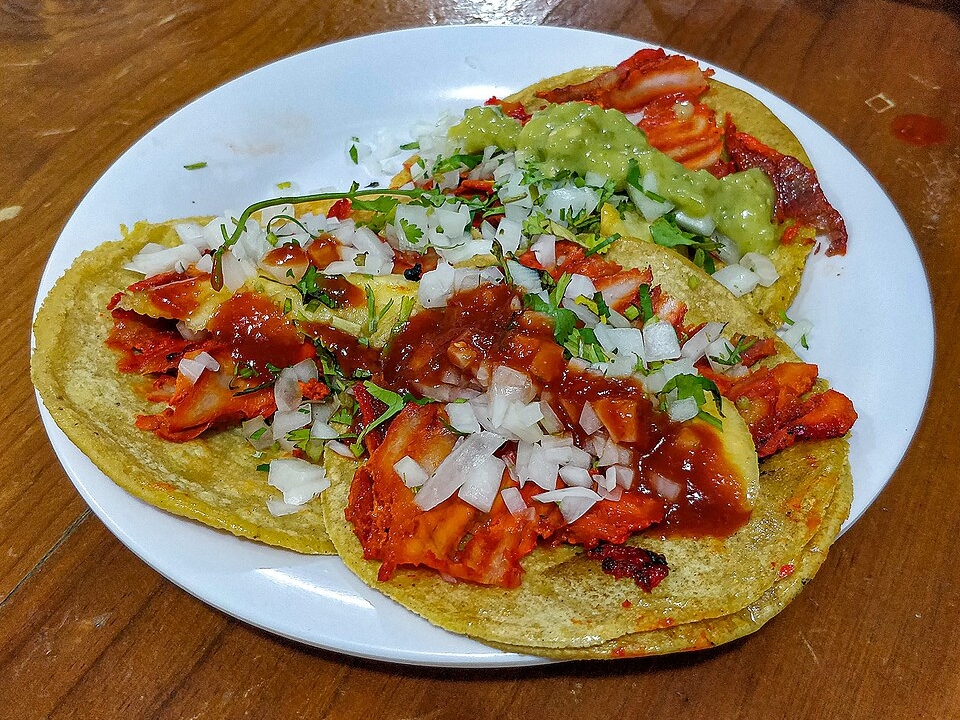
Tacos al Pastor are a favorite in Mexico City and many other parts of the country. They feature thin slices of pork marinated in a mix of chili, spices, and pineapple. The meat is cooked on a vertical spit, sliced off in layers, and served on a small corn tortilla. Each taco is usually topped with onions, cilantro, and a wedge of lime for squeezing.
The balance of sweet and savory flavors, along with a slight char from the grill, makes these tacos stand out. Vendors often carve the meat straight onto the tortilla with one fluid motion. The spit is usually crowned with a slice of pineapple that adds just the right touch of sweetness. It is common to see people lined up at night around glowing carts where these tacos are made fresh.
Banh Mi, Vietnam
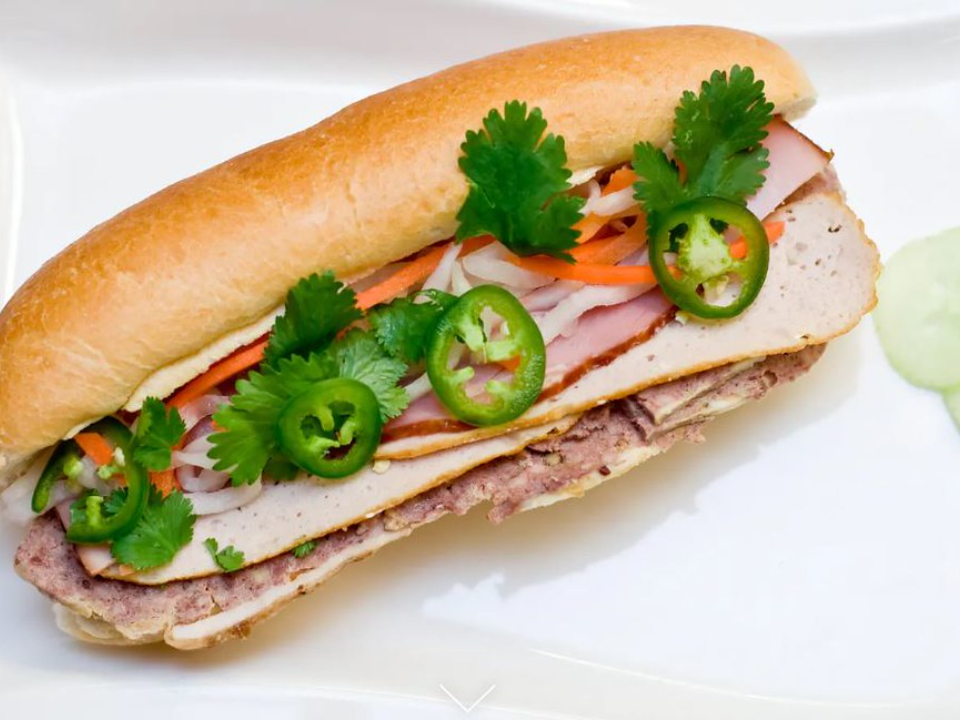
Banh Mi is a Vietnamese sandwich that blends local ingredients with French influence. It begins with a crusty baguette that is soft on the inside and crisp on the outside. Fillings vary but often include pork, pate, pickled vegetables, cilantro, and chili. Some versions use grilled chicken or eggs, depending on what the vendor has on hand.
The contrast of textures and flavors makes Banh Mi a popular meal on the go. It is quick to eat but leaves a strong impression. Street vendors in cities like Ho Chi Minh sell them from bicycles or small stands. Despite its simple appearance, this sandwich reflects the mix of cultures that helped shape Vietnamese cuisine.
Takoyaki, Japan

Takoyaki are small round snacks from Japan made with a wheat-based batter and filled with chopped octopus. The batter is poured into round molds on a special grill, then turned with skewers until each piece is golden and evenly cooked. The dish is topped with savory sauce, mayonnaise, seaweed flakes, and dried bonito shavings that move from the heat.
These snacks are hot, slightly crispy on the outside, and soft inside. Takoyaki stalls are common at festivals and busy shopping streets in cities like Osaka, where the dish originated. Vendors make them quickly, and it is common to wait in line as the next batch cooks. They are served in small trays, making them easy to eat while walking.
Arepas, Colombia and Venezuela
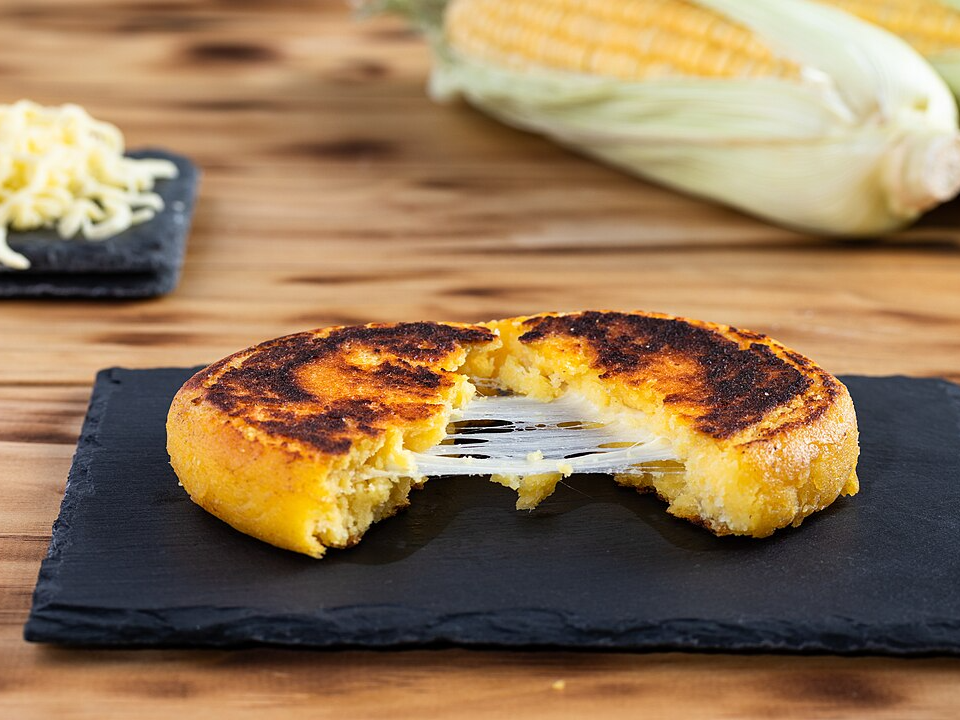
Arepas are cornmeal cakes that can be grilled, baked, or fried. They are split open and filled with ingredients like cheese, meats, beans, or avocado. The base has a soft yet sturdy texture, and the filling varies depending on regional styles. Both Colombia and Venezuela take pride in their versions, with each country adding its twist.
You can find arepas sold from carts or sidewalk grills, often served hot with melted cheese or stewed meats. They are eaten at all times of day, whether for breakfast or a late snack. The outside usually has a slight crispness, while the inside remains soft. Their portability and variety make them a common street food across both countries.
Pani Puri, India
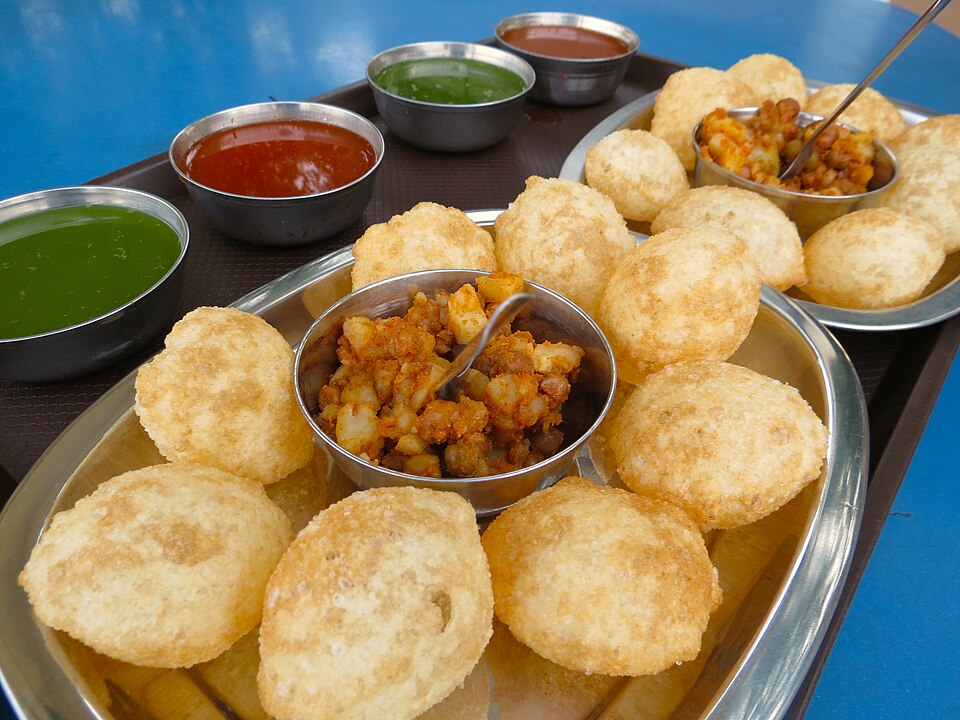
Pani Puri is a favorite in many parts of India and goes by other names like Golgappa or Phuchka depending on the region. The dish starts with small hollow puris that are fried until they puff up. These are then filled with a mixture of spicy potatoes, chickpeas, and tamarind water. The final result is meant to be eaten in one bite to catch all the flavors.
Vendors usually prepare each puri by hand and pass them to customers one at a time. The burst of spice, sourness, and crunch makes it an exciting snack. People often crowd around carts during the evening, waiting for their turn. It is as much about the experience as it is about the taste.
Gimbap, South Korea
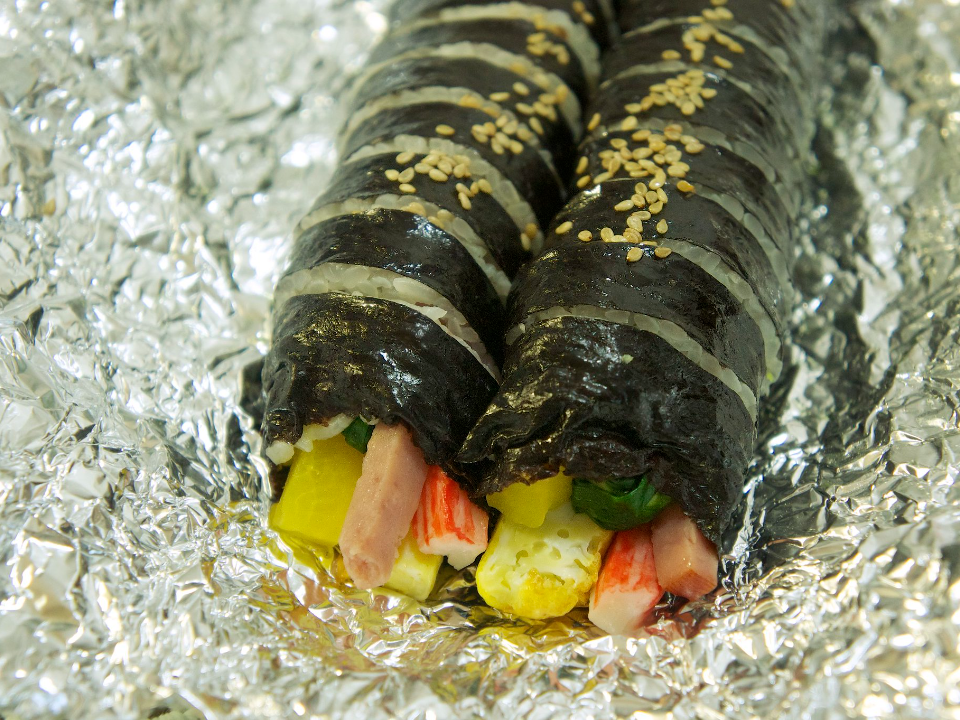
Gimbap is a Korean street food that looks similar to sushi but has its own distinct identity. It consists of rice, vegetables, and meat or seafood rolled in seaweed. Popular fillings include egg, pickled radish, spinach, and crab sticks. The roll is sliced into bite-sized pieces and served cold or at room temperature.
Vendors sell Gimbap in outdoor markets and subway stations, making it a handy snack for busy people. The rolls are wrapped tightly and easy to carry. Unlike sushi, Gimbap uses sesame oil and does not include raw fish. It offers a simple way to enjoy balanced ingredients on the move.
Currywurst, Germany
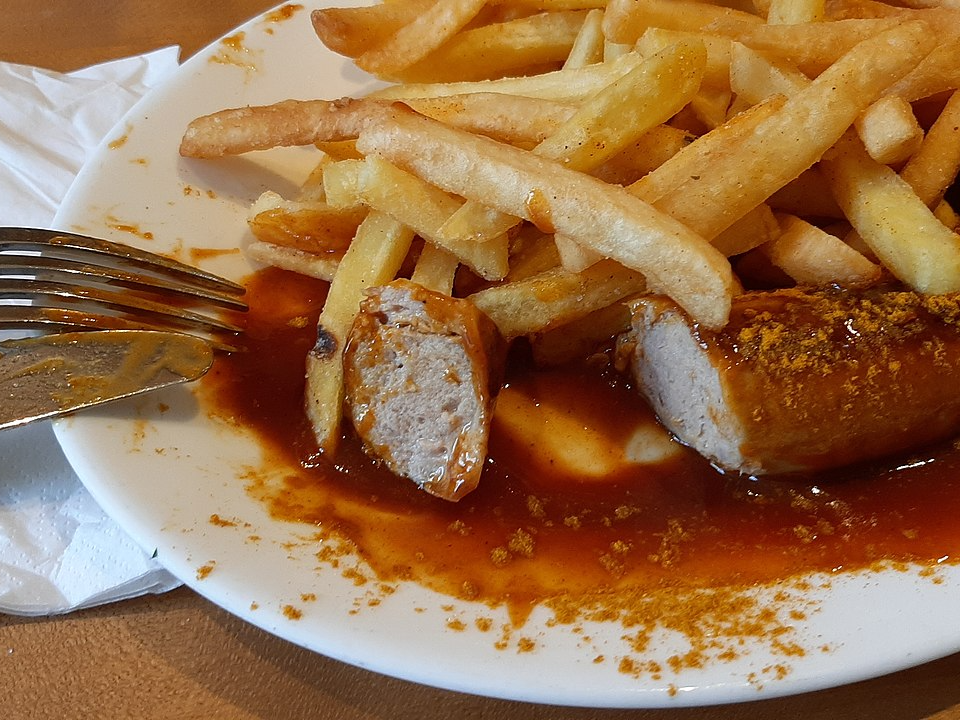
Currywurst is a popular street food found in Berlin and other German cities. It features sliced sausage covered in a curry-spiced ketchup sauce. The sausage is typically fried or grilled before being cut into chunks and served with a side of fries or bread. It is often eaten with a small wooden fork.
The mix of smoky, sweet, and tangy flavors has kept this dish popular since the 1940s. It was first sold by a woman who combined ketchup and curry powder given to her by British soldiers. Now, it is a familiar sight at stands across the country. Locals and tourists both stop for a quick bite between errands or sightseeing.
Jianbing, China
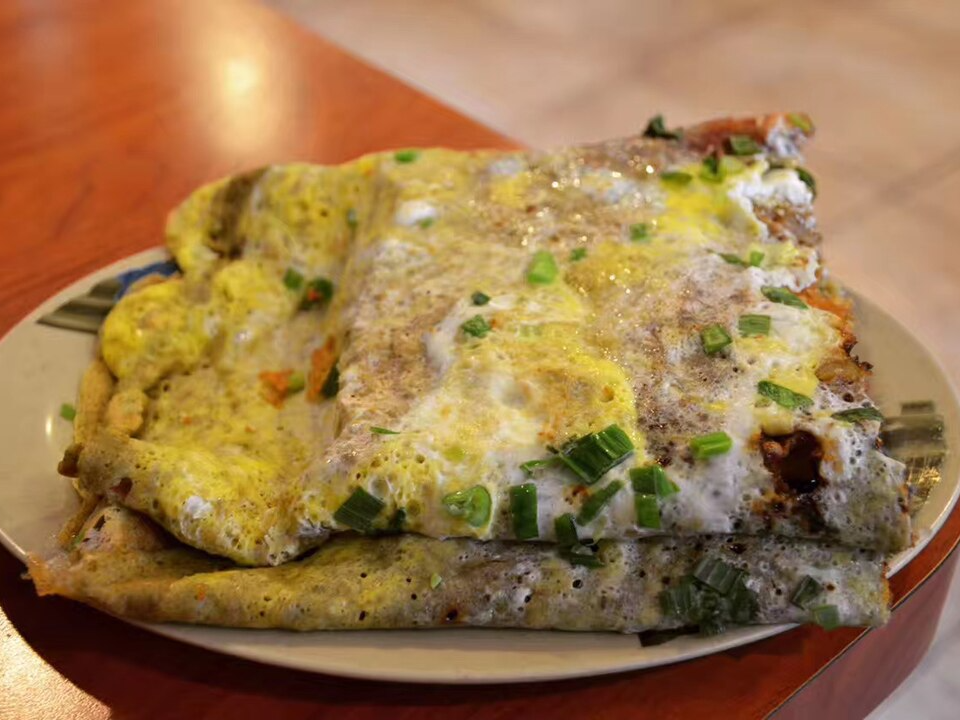
Jianbing is a savory Chinese crepe commonly eaten for breakfast. It starts with a thin batter spread across a large circular griddle. An egg is cracked on top and spread over the surface before adding scallions, sauces, and a crispy wonton wrapper. Once cooked, it is folded and wrapped into a handheld package.
The result is crisp on the outside, soft on the inside, and packed with flavor. It is sold from mobile carts and small stalls on busy streets, especially in northern China. People eat it on the go, often with a cup of soy milk. The combination of textures and sauces makes it satisfying and easy to enjoy quickly.
Churros, Spain
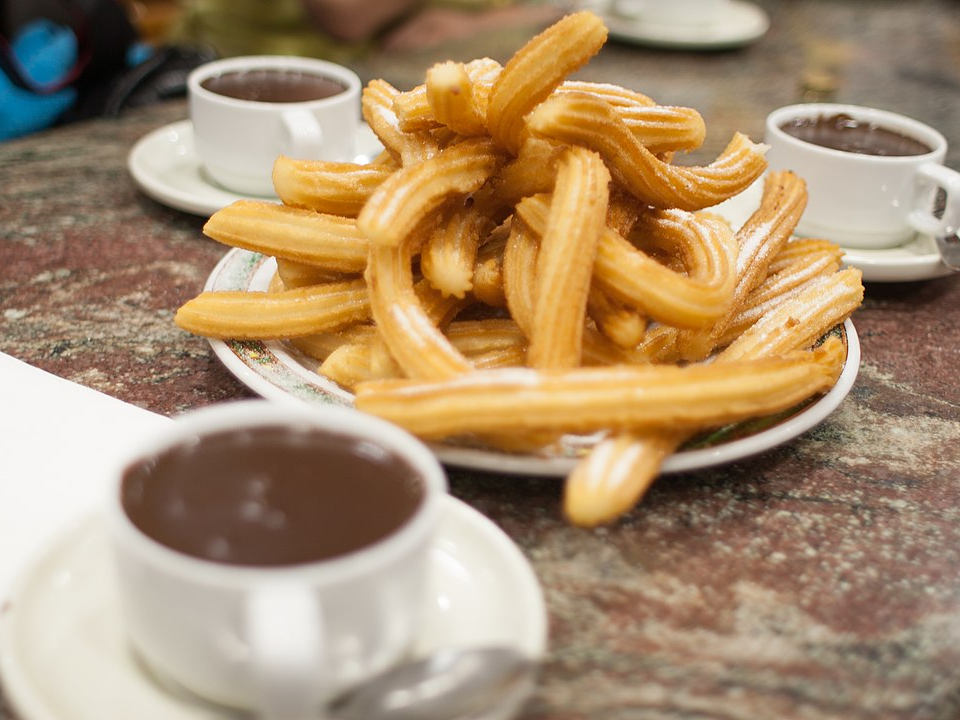
Churros are fried dough pastries popular across Spain, often eaten in the morning or late at night. They are made by squeezing dough through a star-shaped nozzle into hot oil. Once golden and crisp, they are sprinkled with sugar and sometimes cinnamon. Churros are commonly served with a thick cup of hot chocolate for dipping.
Street vendors set up near plazas, events, or busy corners, frying batches on demand. The outside is crunchy, while the inside stays soft and light. The hot chocolate adds a rich contrast that makes this treat hard to resist. Even simple versions without dipping sauce are still widely enjoyed.
Empanadas, Argentina
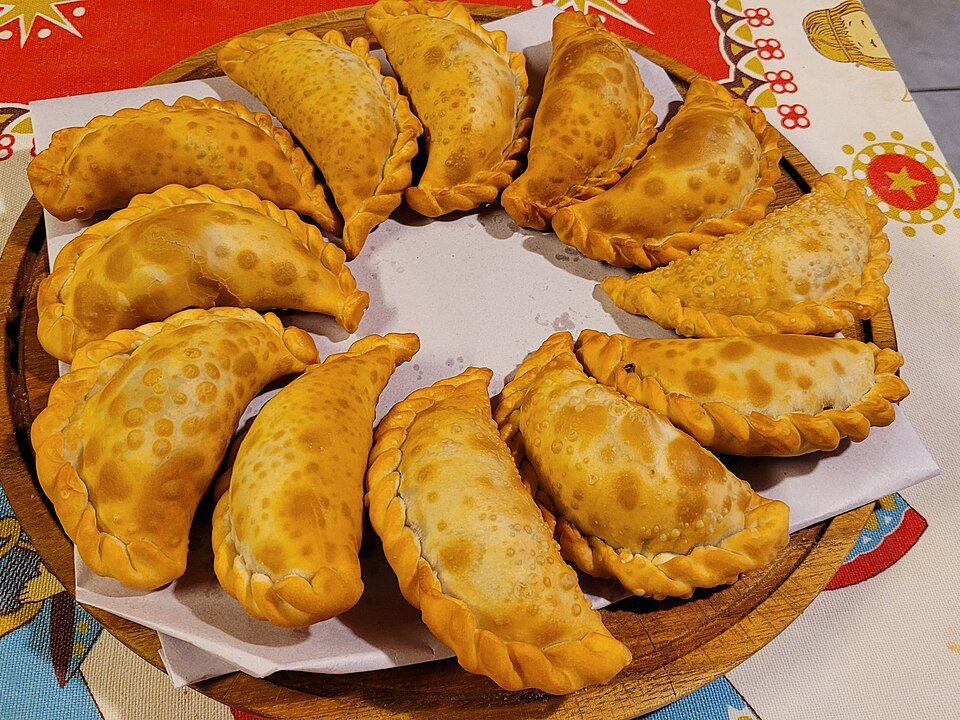
Empanadas are filled pastries that are baked or fried, depending on the region. The dough is folded around fillings such as beef, chicken, cheese, or vegetables. They are shaped into half-moons and sealed with a crimped edge. Each area in Argentina has its own take on which ingredients to use.
Vendors sell them in parks, bus stations, and public squares, often wrapped in paper for easy handling. The crispy exterior and warm filling make them a favorite snack or light meal. They can be eaten standing up or while walking. These pastries are filling without being heavy, making them a popular everyday food.
Koshari, Egypt

Koshari is a beloved street dish in Egypt that combines rice, lentils, macaroni, and chickpeas. It is topped with a spiced tomato sauce and crispy fried onions. Some vendors offer a side of garlic vinegar or hot sauce to add more flavor. It may sound like an odd mix, but the combination works surprisingly well.
Street vendors scoop large portions from steaming pots into bowls or takeaway containers. It is filling, affordable, and packed with texture from the grains, pasta, and crunchy onions. Locals often eat it during lunch breaks or on the way home. The dish shows how simple ingredients can come together to create something memorable.
Satay, Indonesia

Satay is a popular grilled meat skewer found throughout Indonesia and other parts of Southeast Asia. The meat, often chicken or beef, is marinated in a mix of spices before being grilled over open flames. Each skewer is served with a side of peanut sauce, rice cakes, or cucumber slices. It is a dish known for its smoky flavor and rich dipping sauce.
Vendors typically grill the meat in small roadside stalls, and the aroma often draws in passersby. The combination of tender meat and nutty sauce makes each bite satisfying. It is often eaten during festivals or as a quick dinner option. Some regions add their own twist with different spice mixes or meat choices.
Ceviche, Peru
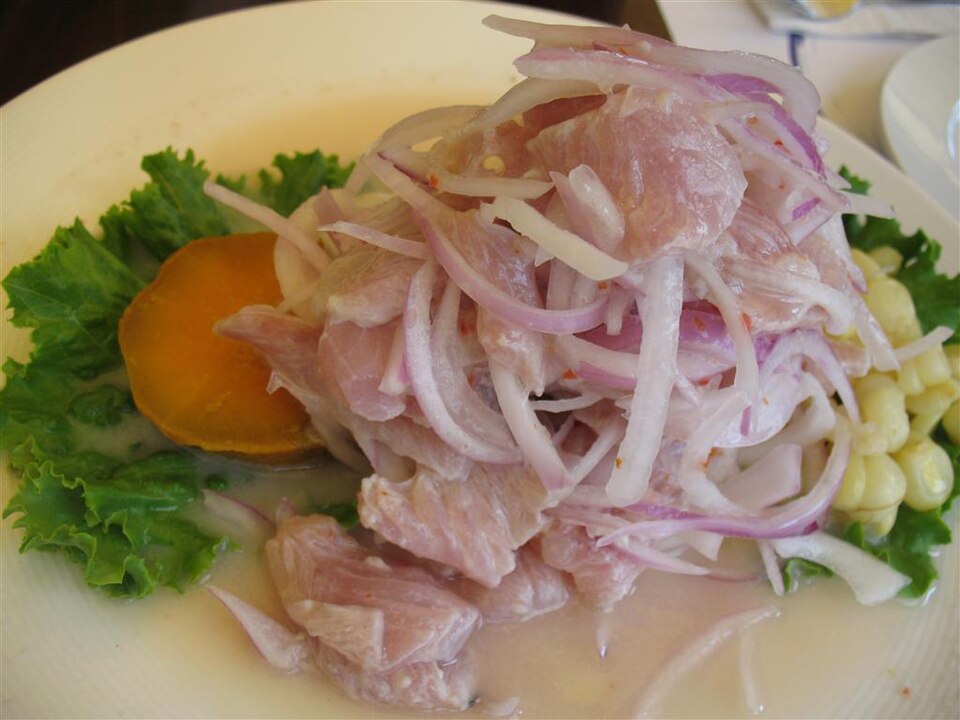
Ceviche is a refreshing seafood dish popular along the Peruvian coast. It features raw fish or seafood marinated in citrus juice, usually lime, which changes the texture of the fish. Red onions, cilantro, and chili peppers are often added, along with sweet potatoes or corn on the side. The acidity cooks the fish without using heat.
Street stalls and seaside markets serve ceviche in small cups or bowls. It is especially popular during hot weather, offering a light and tangy meal. The freshness of the ingredients plays a big role in its flavor. Though simple, ceviche requires care in timing and balance to get it right.
Simit, Turkey

Simit is a circular bread with a crunchy crust, covered in sesame seeds. It is often compared to a bagel but has a lighter, crispier bite. Vendors stack them high in glass carts or carry them on trays balanced on their heads. They are typically sold early in the morning or late in the afternoon.
People eat Simit plain or with cheese, olives, or jam. It is commonly paired with tea and can be eaten while walking or sitting in a park. The bread’s slight sweetness and sesame aroma make it comforting and familiar. It has long been part of daily life in cities like Istanbul.
Pierogi, Poland
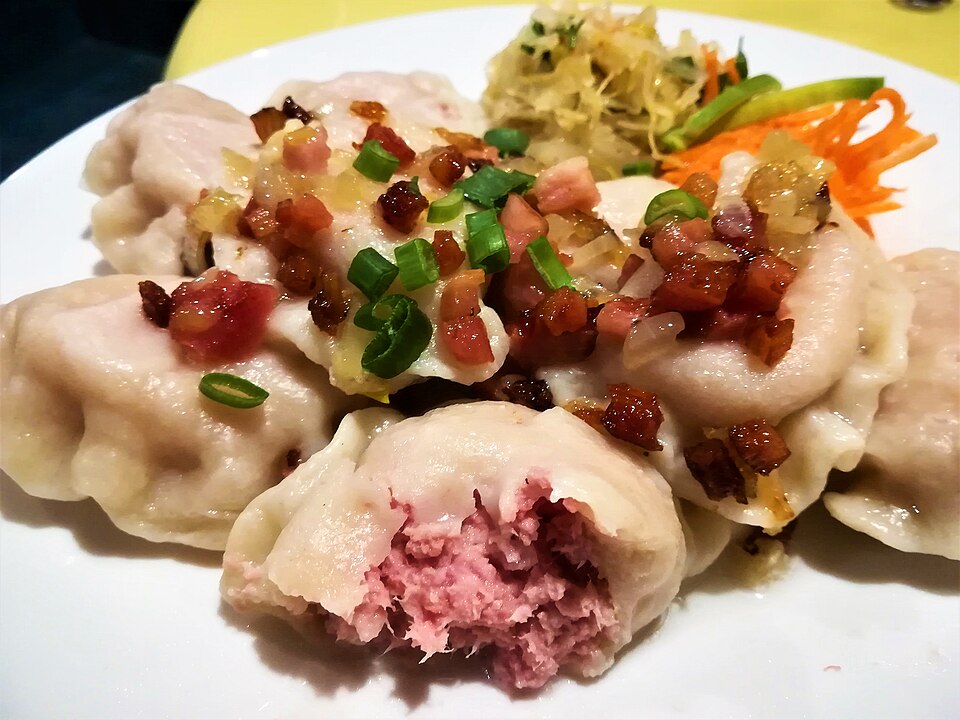
Pierogi are dumplings filled with ingredients like potatoes, cheese, cabbage, or meat. They can be boiled, pan-fried, or both, depending on preference. After cooking, they are often topped with onions or sour cream. Street stalls and small food trucks sell them in many Polish cities.
Each pierogi is soft and slightly chewy, with a warm and comforting filling. They are usually served in small portions, making them perfect for a snack. The variety of fillings gives everyone a chance to find a favorite. Pierogi are especially popular during winter when hearty food is welcome.
Hotteok, South Korea

Hotteok is a sweet Korean pancake filled with brown sugar, cinnamon, and crushed nuts. The dough is pressed flat on a griddle until the outside is golden and crisp. As it cooks, the filling melts into a warm, sticky center. It is a winter favorite, often eaten straight from the pan.
Vendors serve hotteok wrapped in paper sleeves to keep hands clean. The contrast between the crunchy outside and gooey middle makes it comforting and satisfying. Some versions add seeds or other nuts for extra texture. It is a treat many look forward to during the colder months.
Corn on the Cob with Toppings, Mexico
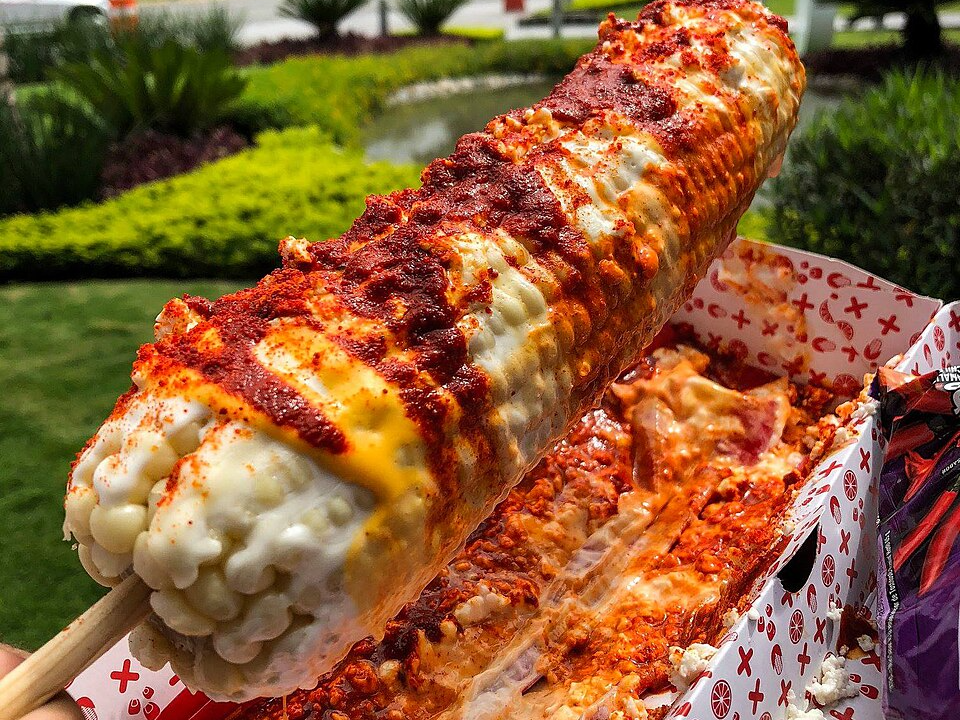
In Mexico, corn on the cob, or “elote,” is grilled and served with a variety of toppings. Common additions include mayonnaise, cheese, chili powder, and lime juice. The corn is often skewered on a stick to make it easy to eat on the go. It has a smoky flavor from the grill and a creamy, spicy coating.
Vendors often work near parks, schools, or public events. Customers choose how they want theirs prepared, and it is made to order. The mix of heat, tang, and richness keeps people coming back. It is a simple snack that highlights the country’s love for corn-based dishes.
Bratwurst, Germany
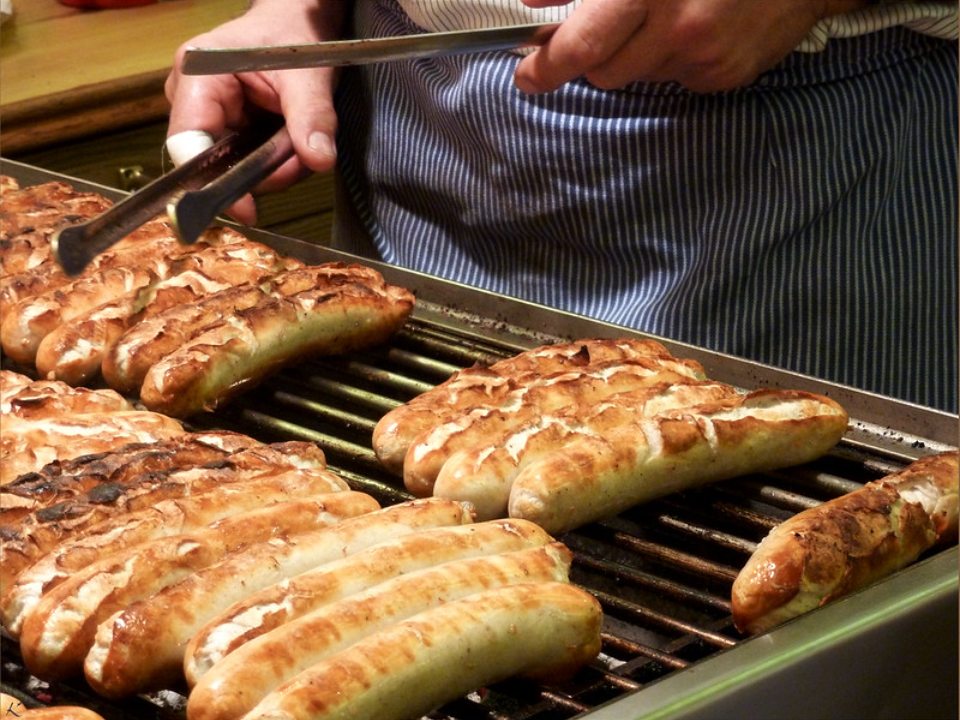
Bratwurst is a type of German sausage made from pork, beef, or veal. It is usually grilled until browned and served in a bread roll with mustard. The sausage has a juicy bite and a mildly seasoned flavor that pairs well with tangy condiments. It is often sold at fairs, train stations, and markets.
Vendors keep them hot on open grills, offering a quick meal for people in a hurry. Each region may have its own version with slight differences in spice or preparation. Though basic, the combination of meat and bread is satisfying and easy to eat without utensils. It remains one of Germany’s most recognizable street foods.
Bunny Chow, South Africa
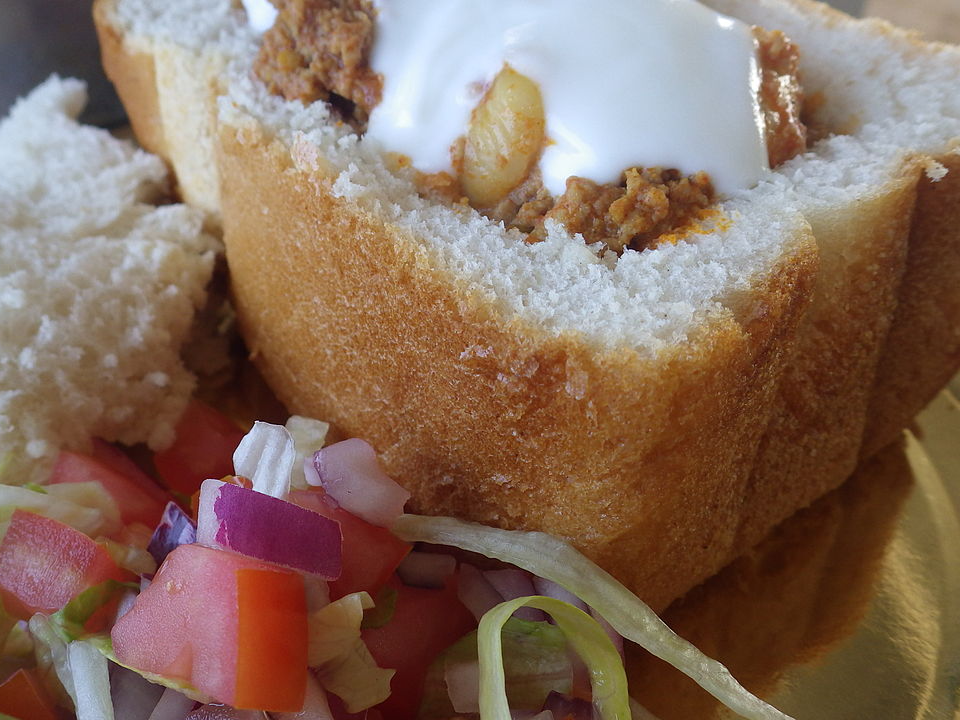
Bunny Chow is a unique street food from Durban, South Africa, made by hollowing out a loaf of white bread and filling it with curry. The curry may contain chicken, lamb, beans, or vegetables depending on the vendor. It is spicy, rich, and served hot with the bread’s removed piece placed on top. Despite the name, it has no connection to rabbits.
This dish grew out of the Indian community in Durban and became popular for its portability and satisfying portions. Vendors often prepare it in advance and serve it quickly, making it a convenient lunch for workers and travelers. Eating it with your hands is common, and the bread soaks up all the flavors. Bunny Chow is known for being both filling and flavorful.
Pad Thai, Thailand
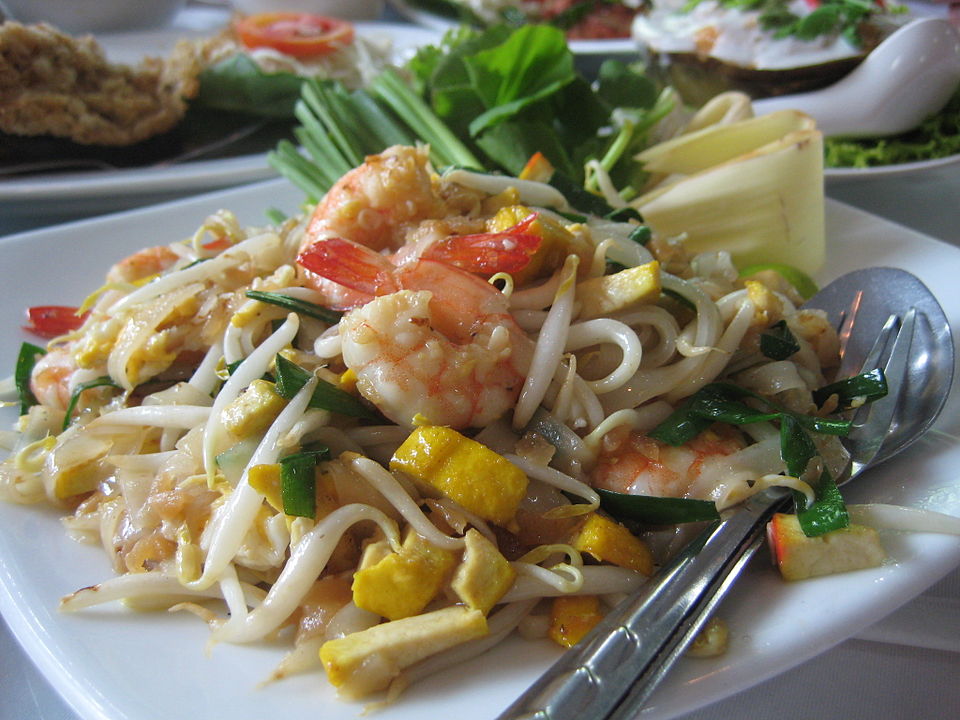
Pad Thai is a stir-fried noodle dish that blends rice noodles with eggs, tofu, bean sprouts, and crushed peanuts. It is flavored with a balance of tamarind, fish sauce, sugar, and lime. Street vendors typically cook it in large woks over open flames, tossing the ingredients quickly for even flavor. Some versions include shrimp or chicken.
It is served hot, often with lime wedges and extra chili flakes on the side. The dish has a sweet and tangy flavor with crunchy textures from peanuts and sprouts. Pad Thai is one of the most recognized Thai street foods, popular with both locals and tourists. It is widely available and offers a quick, tasty meal at nearly any hour.
This article originally appeared on Avocadu.
